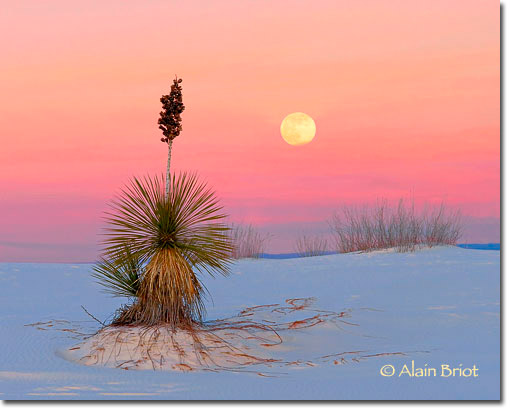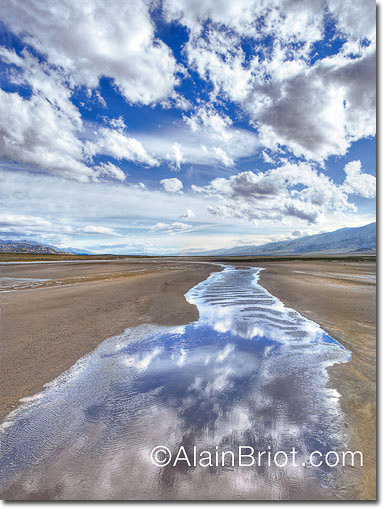Creating Meaningful Photographs |
1 - Introduction
After over 15 years of major advances in digital technology, there is a need to shift focus back to the artistic aspects of photography, to the essence of seeing and personal expression, and to the fundamental aspects of photography as an art. In doing so I believe that that in order to make meaningful photographs, learning the art of seeing and vision is as important as learning craft and technique.
The masters created emotionally powerful images without all the capabilities that digital photography gives us. The medium and the techniques they used were fewer and simpler. For example, they matched the properties of film to specific visual emotions. While having fewer options and a simpler medium limited their possibilities, it also provided a more direct path towards expressing vision and emotions.
Today, with digital photography there is a tendency to focus more on technology and less on the emotional experience that an image brings to the mind of the viewer. In a way, the multitudes of possibilities that digital photography offers, and the challenges offered by learning how to master these possibilities, take our focus away from expressing emotion and vision in our work.
There is also an over-saturation of images from the multitude of people buying digital cameras and creating photographs. Among this multitude of photographs, those that stand out often create interest through technique rather than vision. They seek to capture our attention through technical excellence and by using the latest techniques rather than by presenting a new way of looking at the world.
However, to leave a lasting impression, to become iconic, to become a masterpiece, a photograph must achieve both emotional impact and technical excellence. It must demonstrate both mastery of the craft and technique and mastery of vision and expression.
We can do what the masters did. We just need to adjust the way we use the tools, software and print materials to create photographs that have an emotional impact and technical excellence.
2 - The subject is not enough
There are 2 main elements to the creation of a good photograph:
A - What the subject brings to you:
- Inspirational opportunities
- Light quality
- Compositional opportunities
- More:
B - What you bring to the subject:
- Ability to recognize the light quality
- Ability to take advantage of compositional opportunities
- Mastery of your camera, tripod and other equipment
- Openness to inspirational opportunities
- Quality of the image processing and optimization
- Extent to which you use your artistic license
- Extent to which you promote your work to make it known
- More:
You cannot depend only on what the subject brings to you. You have to bring something to the subject in equal proportions to what it brings you. When you cannot rely on the impact of the subject alone, you have to bring more to the subject. This is the case with subjects that are less dramatic, more quiet, less impressive. In these instances how you approach the subject becomes more important than what the subject actually offers. Relying 100% on what the subject brings to you is not sufficient to create photographs that go beyond being documentary recordings of the subject.
In order to create expressive photographs (as opposed to documentary photographs) you have to bring at least as much to the subject as the subject brings to you. In effect, you usually have to bring more to the subject than the subject brings to you. This means transforming the subject from what it looks like to everyone into what it looks like to you specifically.
Focusing on lines and shapes in the image is a start because it goes beyond the mere description of the subject.
However, it is only a start and the next step is to move towards creating images that evokes emotions and don't just rely on shapes, lines and colors to create interest.

3 - Remarks on the new and not so new
Many things that were difficult to master with film have become easy to achieve with digital photography. As a result, our concept of what is 'mundane' or 'commonplace' has changed. We now see on Facebook the work on beginning photographers that match, technically speaking, work that was previously created by experienced professionals and found only in galleries or museums. Today, for us to be surprised by a photograph, for us to take a second look, the image must go beyond what we see everyday around us.
As time goes by, we get used to things. Certain types of processing that impressed us a few years back are now seen as being commonplace. We have come to expect them and we no longer are impressed by them. For our work to be noticed we need to go further and do something new. This is the outcome of digital processing being widely available and used by a vast number of people.
When that happens it is worth asking if our photographs are interesting because they make use of 'new' but superficial effects, effects that will eventually become commonplace? Is it their novelty that makes them interesting, and will they become commonplace now that this novelty is gone?
Or, are our photographs interesting because they focus on fundamental artistic values? Are we creating photographs that convey feelings and emotions, images that go beyond a mere description of the subject? If so, these images are more likely to have lasting value than images that make use of superficial techniques.
4 - A growing challenge
As digital photography becomes more and more mainstream, simply taking a photograph is no longer enough. We have to do much more than going to interesting places and 'snapping pics.' We have to become more sophisticated photographers in order to rise above the masses of new 'photographers.'
This process starts with learning the fundamental aspects of photography, as taught in my first 2 books. These fundamental aspects include learning about light and composition. It also includes learning how to use your camera until it becomes an extension of your body rather than a foreign device that you are trying to figure out each time you turn it on. You want the camera to be your friend, not something that fights you every step of the way by refusing to do what you want.
In short, we have to become more sophisticated. This is achieved by working harder than other photographers and by doing what they are not willing to do. This includes studying things they will do not study because they do not consider them important. Success carries this cost: we have to do what those who fail are unwilling to do.
The goal of our workshops, tutorials and other instructional materials is to give you the tools, the exercises, the practice and above all the methodology to become unique, to stand above those who take the 'easy road' because in art the easy road leads nowhere except to where others have gone before. In art, only things that are new are of interest to art collectors and admirers. What has already been done is of no interest in regards to developing a personal style, being unique, making a name for yourself, being noticed, being collected or becoming a true artist.
5 - Important questions in regards to the above:
In order to develop a personal style you have to form personal opinions about what you like and dislike in art. Developing a style starts by visually expressing, in your work, your personal opinions about what you like and dislike. This process starts by asking yourself questions. Here are some of the most important ones:
- What does the subject mean to me?
- How do I feel when looking at this subject?
- What emotions do I experience?
- What do I want to express in my photographs?
- How do I want to share my emotions with my audience?
- Do I rely too much on what the subject gives me and not enough on what I bring to the subject?
- Do I expect too much from the subject?
- What direction do I want to give to my photography?
- What is the purpose of my photography?
- Do I limit myself to the 'Ansel Adams moves?
- Or, do I tap into the infinite creative capabilities offered by digital processing?
- If yes, which of these possibilities do I use? Which ones do I not use?
- Which specific colors, shapes, artistic approaches, etc. do I like or dislike?

6 - Schooling and Education
In "education," there is schooling and there is true education, paideia, to use the Greek term. Schooling is how we acquire skills and knowledge. Education is what stirs the soul.
The literal meaning of Paideia is 'child rearing.' The term refers to all of us being children when it comes to learning something new. We start with not knowing and through Paideia we become educated. No one starts with knowledge, not even the teacher. All of us go through the same process of going from infancy to knowledge. We follow this process for every new subject we decide to study.
Applied to photography, this is the difference between learning how to use camera, light and composition and knowing how to express emotions and vision in our work. Schooling is learning the technique of photography. Education is learning the art of photography.
7 - Conclusion
Fear of criticism is the number one reason why most photographers hold back and never develop a personal style or express a personal vision. They are afraid that revealing too much of themselves in their photographs will expose them to criticism. To hide this fear they put forth a variety of problems such as 'I am not good enough,' or 'I don't have the right equipment,' or 'I need to learn more,' or 'I am not familiar enough with this subject,' or 'I am not an artist,' and so on.
Doing so only postpones having to face the fear attached to criticism. The true solution is to get rid of fear. This is achieved by focusing on the rewards instead of on the risks. Criticism is a reality. I would be lying if I said it will not come your way. I receive my share of criticism regularly, if not daily at least weekly. However, the rewards I receive from the work I do greatly exceed this criticism. This is what makes me want to continue and go further. I don't pay much attention to the criticism. I pay attention to the positive comments I receive. I pay attention to how my work impacts others positively and to the difference my work makes for others.
Do the same. Focus on the rewards, not on the risk. You will be amazed at the results you will achieve.
Comments on NPN landscape photography articles? Send them to the editor. NPN members may also log in and leave their comments below.
 Alain Briot creates fine art photographs, teaches workshops and offers DVD tutorials on composition, conversion, optimization, printing and marketing photographs. Alain is also the author of Mastering Landscape Photography. Mastering Photographic Composition, Creativity and Personal Style and Marketing Fine Art Photography. All 3 books are available from Amazon and other bookstores as well from Alainís website.
Alain Briot creates fine art photographs, teaches workshops and offers DVD tutorials on composition, conversion, optimization, printing and marketing photographs. Alain is also the author of Mastering Landscape Photography. Mastering Photographic Composition, Creativity and Personal Style and Marketing Fine Art Photography. All 3 books are available from Amazon and other bookstores as well from Alainís website.
You can find more information about Alain's work, writings and tutorials as well as subscribe to Alainís Free Monthly Newsletter on his website at http://www.beautiful-landscape.com To subscribe simply go to http://www.beautiful-landscape.com and click on the Subscribe link at the top of the page. You will have access to over 40 free essays by Alain, in PDF format, immediately after subscribing.
Alain welcomes your comments on this essay as well as on his other essays. You can reach Alain directly by emailing him at alain@beautiful-landscape.com.